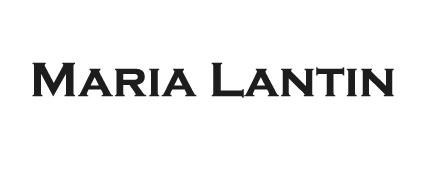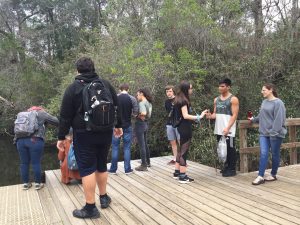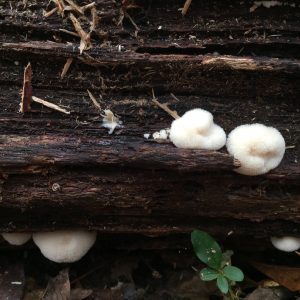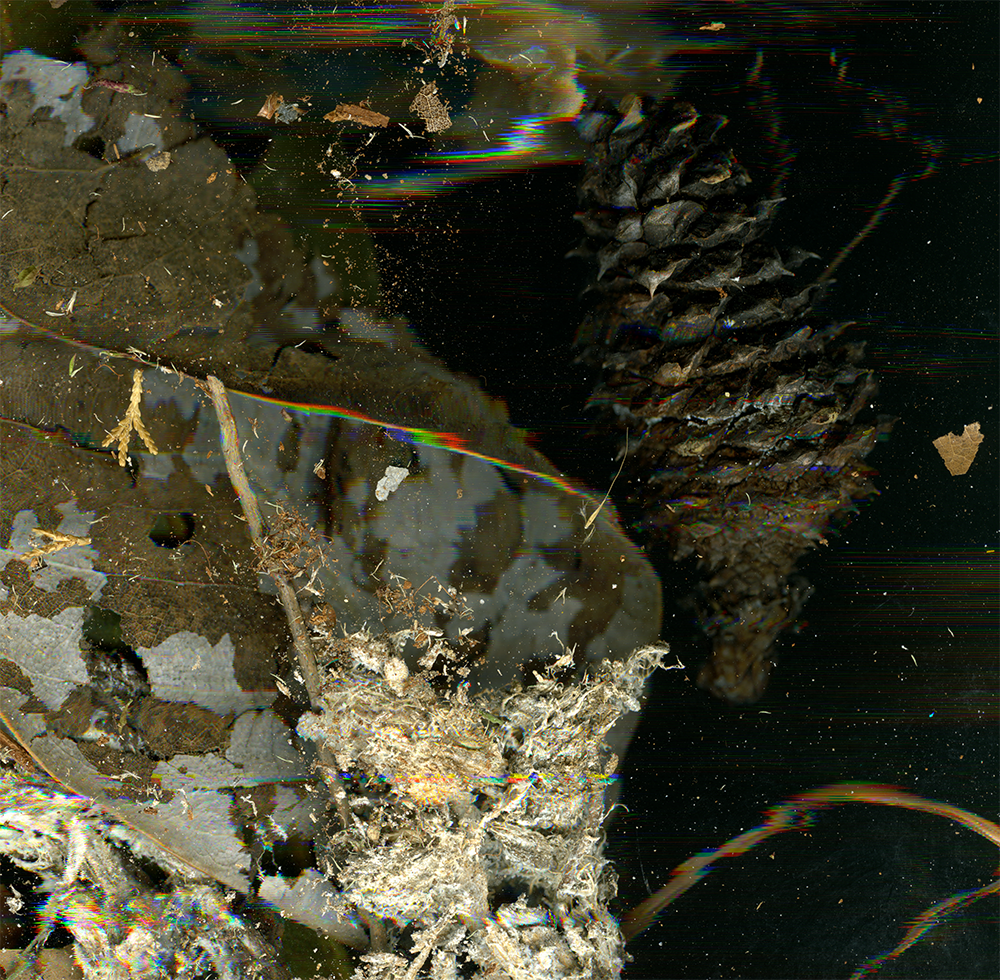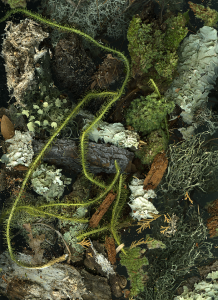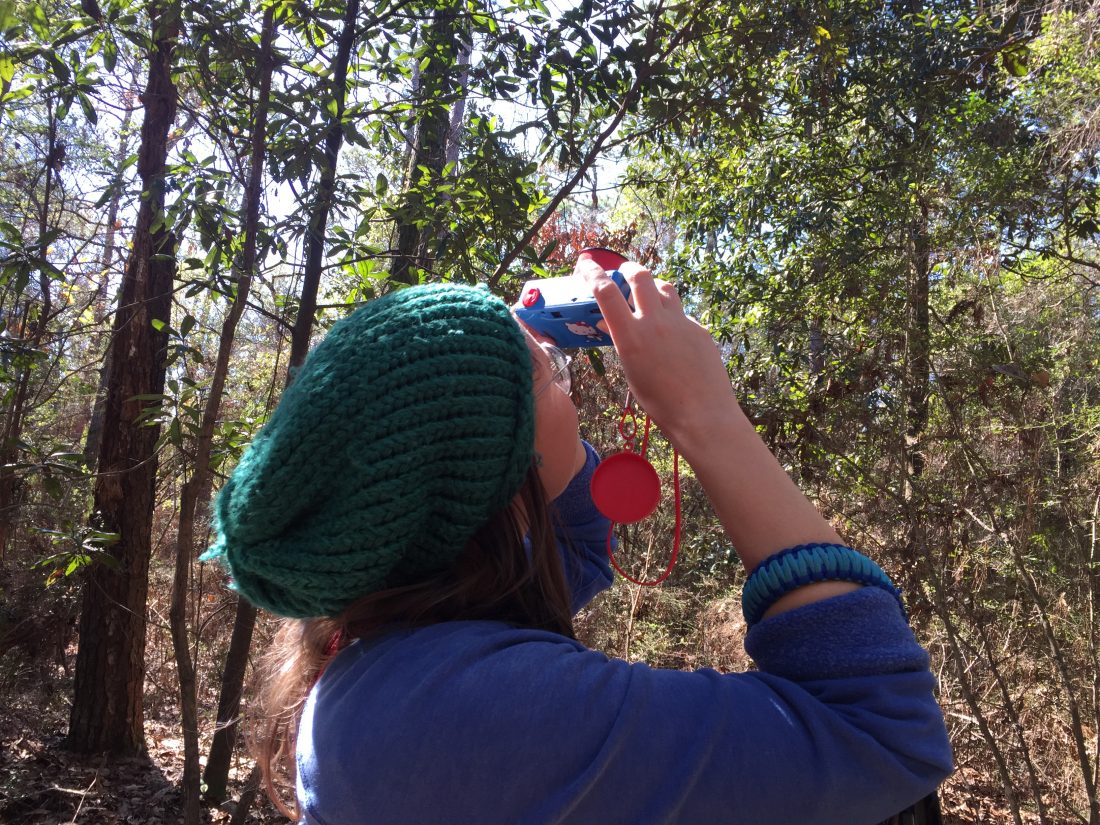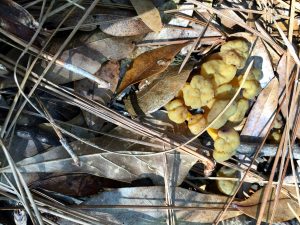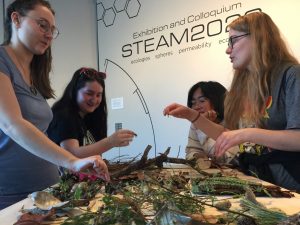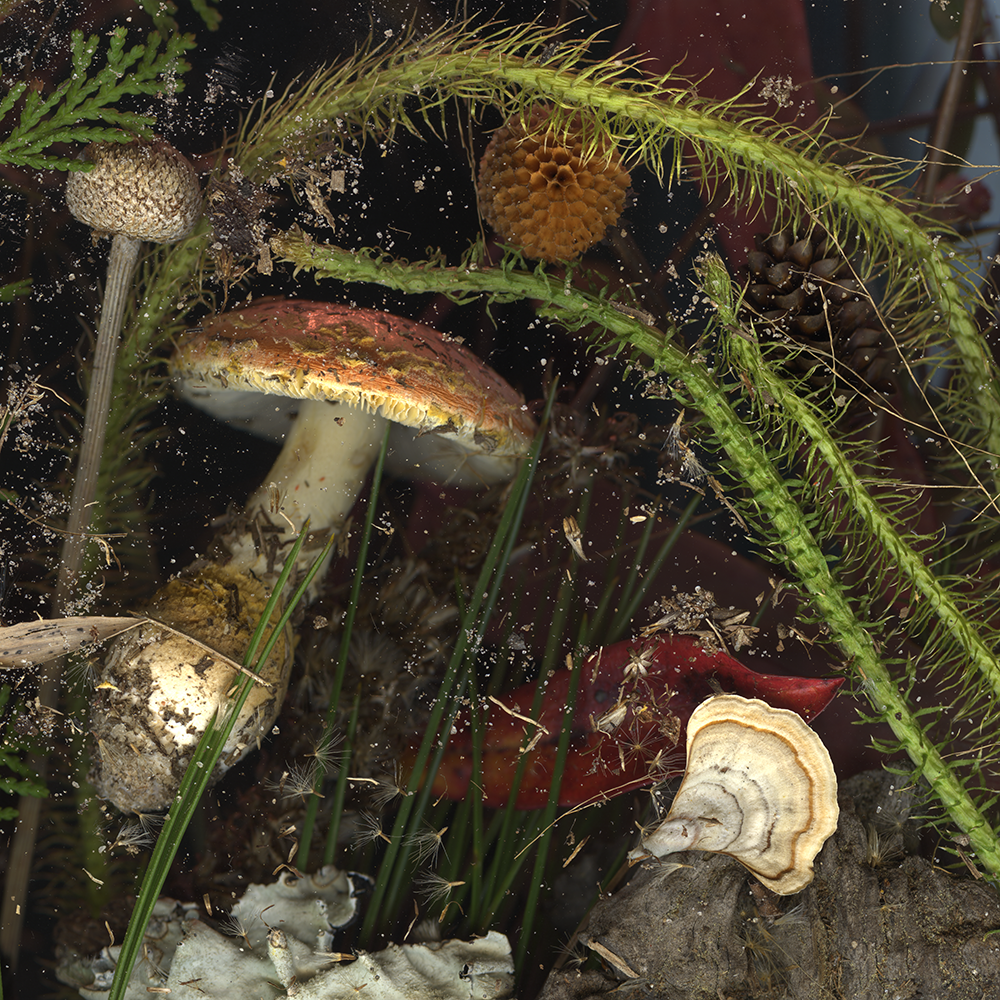A visiting day
Working with the delightful students here has defined our day today. At 8am, Thomas Asmuth and his digital foundations class viewed the installation and conversed with us about the process of creating it. Afterwards we walked through the campus Bayou (Edward Ball boardwalk trail) and found ourselves seeing it anew through the lens of the local knowledge and memories of our guest walkers. Thomas identified the fish in the water, (blue gill and small mouth bass) and many, many of the plants – he even spotted an exotic, definitely non-indigenous, opportunistic taro plant tribe. How it found its way there is a mystery. Alyx Jeffreys, the student in our feature image, brought a handheld bluetooth digital microscope that allowed us to see the bayou in a completely new way. She also had a regular SLR and took some wonderful images – including this lichen.
The students thought ahead and brought bags for collecting garbage and left the bayou better than they found it. We heard about the behaviours of local wild life (Dylan had intimate knowledge of possums – not as cute as you’d think). We saw lots and lots of spider webs of all kinds. It was unclear whether we were seeing so many because they were made more visible by the rain or if the rain had somehow prompted the creation of more webs. They were hard to photograph but we all tried. The view with the microscope was very interesting, especially viewed sidelong.
The collection from this walk collection yielded new pine life, new ferns, and new mushrooms including a tapioca slime mold (ok, not technically a mushroom). Wikipedia claims that this slime mold got its official name, Brefeldia maxima, because it was thought to be particularly ugly. Granted, the specimen we saw was not so big but judge for yourself:
Alyx got a picture of it using her microscope and it looked like snow crystals. I hope we get our hands on this picture to update this post!
In the early afternoon, Nick Crogan, the director of the Pensacola Museum, brought his museum design students to visit us. We discussed all aspects of the exhibit, from conception through to visual technique to production and the the multiple changes and adjustments we all went through in the installation process. We also discussed the unusual format of being highly visible and interactive visiting artists-in-residence and all the advantages that this format has had for us.
Yesterday Noah, a ceramic and sound student had brought up the idea of bringing in physical bowls that could be played in response to the soundscape Simon Overstall created for the installation. He came in with a variety of bowls today and Maria and he experimented with recording them in a rehearsal room using the 360 microphone (Rode NT-SF1 Ambisonic mic). On Thursday we will try recording them in tandem with the installation.
